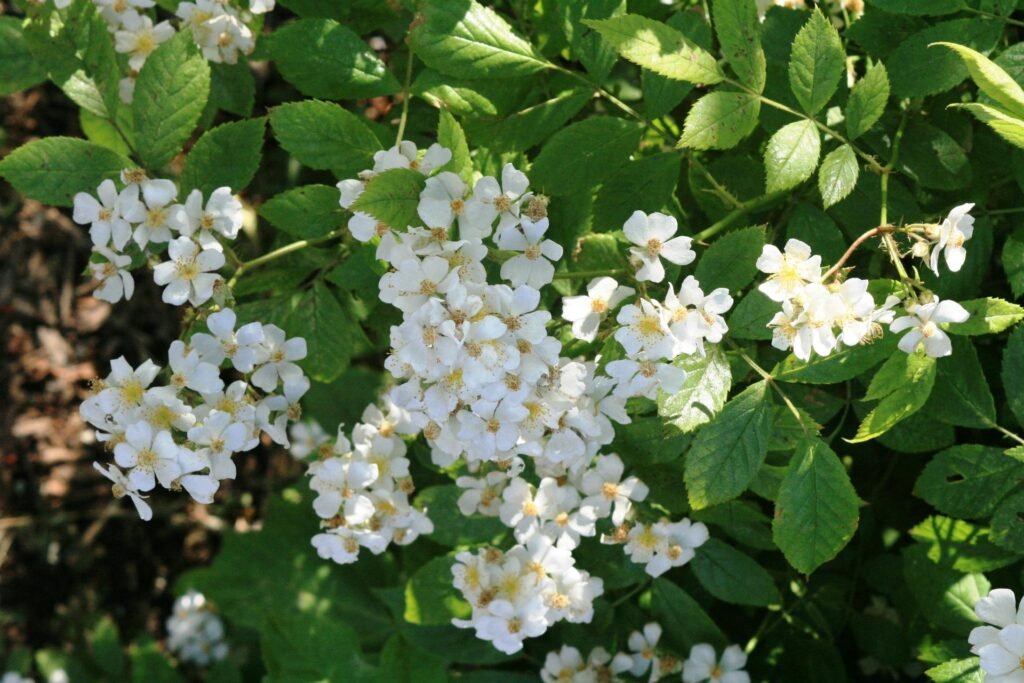Multiflora Rose (Rosa multiflora) is a highly invasive species that poses a significant threat to native ecosystems is a pervasive problem for many landowners, particularly those in the northeastern United States. This article provides a comprehensive guide to identifying and removing this invasive species, helping landowners reclaim their property from its grasp.
Invasiveness of Multiflora Rose
Multiflora Rose is a prolific shrub that reproduces both by seed and vegetatively, allowing it to spread rapidly across landscapes. Its dense thickets can overrun pastures, forest edges, and other natural habitats, displacing native vegetation and altering ecosystems. Furthermore, its thorns make it difficult to navigate, posing a challenge for humans and animals alike.
How to Identify Multiflora Rose
Physical Characteristics
Rose can be identified by its arching stems, which are armed with numerous curved thorns. The leaves are compound, consisting of 5 to 11 leaflets arranged in an alternating pattern along the stem. The leaflets are ovate with serrated margins, and the undersides are typically lighter in color than the upper surfaces.
Flowers and Fruits
One of the key features of Multiflora Rose is its profusion of small white to pink flowers, which bloom in late spring to early summer. These fragrant flowers are followed by clusters of small red rose hips, which persist on the plant throughout the winter months.
Habitat and Distribution
Rose is commonly found in open areas such as fields, forest edges, and roadsides. It prefers full sun but can tolerate a wide range of soil types and moisture levels. Originally introduced as a rootstock for ornamental roses and for erosion control, Rose has since escaped cultivation and become naturalized across much of the United States.
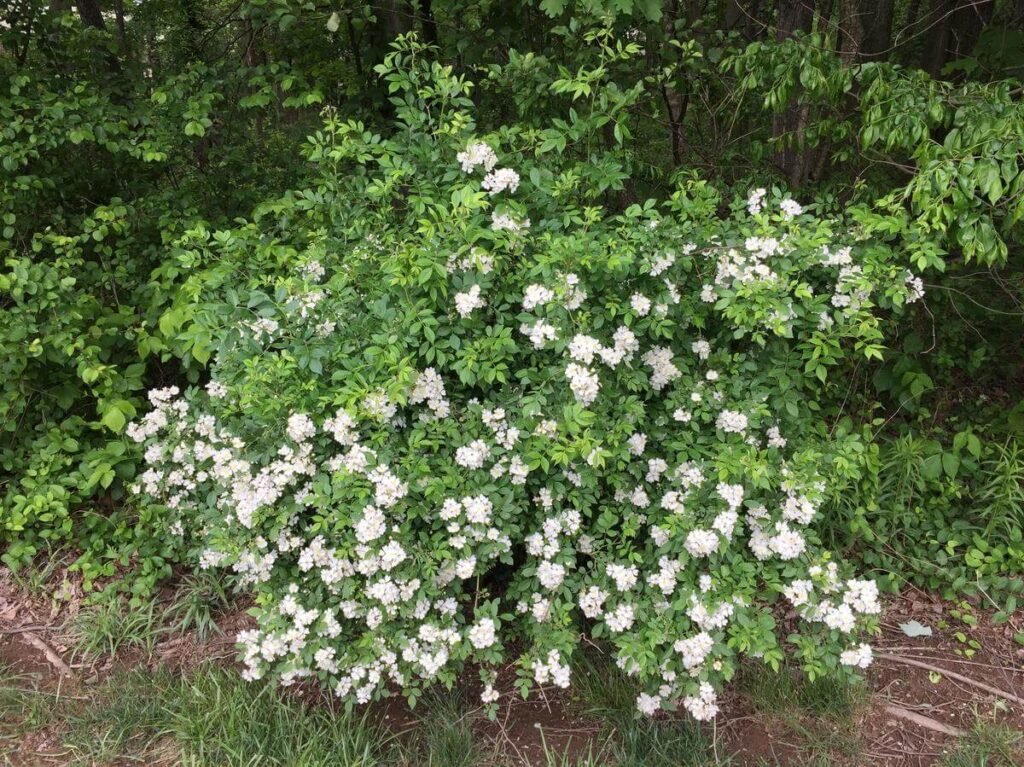
How to Remove Multiflora Rose
Mechanical Control
For small infestations, hand-pulling or digging out Rose plants can be effective, especially when the soil is moist. It’s important to remove as much of the root system as possible to prevent regrowth. Alternatively, cutting the stems close to the ground and immediately applying an herbicide to the cut stump can prevent resprouting.
Chemical Control
Herbicides can be an effective tool for controlling large infestations of Rose. Glyphosate-based herbicides are commonly used for spot treatments, while triclopyr-based products are effective for larger areas. These herbicides should be applied in accordance with the manufacturer’s instructions, taking care to minimize impacts on non-target species.
Biological Control
Biological control methods, such as introducing specialized herbivores or pathogens, can also be used to manage Multiflora Rose populations. However, these methods are often slow-acting and may not provide immediate control.
Frequently Asked Questions (FAQ)
Is Multiflora Rose harmful to humans or animals?
Multiflora Rose is not toxic, but its thorns can cause skin irritation, and the dense thickets it forms can impede movement for humans and wildlife alike.
Can Multiflora Rose be controlled without chemicals?
While mechanical methods such as cutting and mowing can provide some control, large infestations often require the use of herbicides for effective management.
How quickly does Multiflora Rose spread?
Rose can spread rapidly, particularly in areas with favorable growing conditions. It is capable of producing thousands of seeds per plant, which can remain viable in the soil for many years.
Is it legal to remove Multiflora Rose from my property?
In most cases, landowners are permitted to remove Multiflora Rose from their property, especially if it is considered an invasive species in their area. However, it’s always a good idea to check local regulations before taking action.
In conclusion, Multiflora Rose is a pervasive and challenging invader that requires careful management to control. By employing a combination of mechanical, chemical, and biological control methods, landowners can effectively combat this aggressive species and restore balance to their ecosystems.

